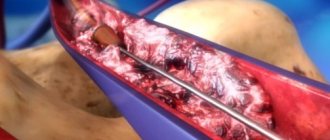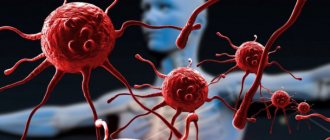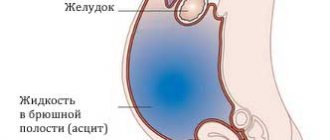If a person experiences pain in the area of the left side of the hypochondrium, the first suspicions immediately fall on the pancreas or stomach. However, another, neighboring organ may also be disturbing.
The spleen is one of the most mysterious organs, the functions of which are not fully understood. This is the most important organ that helps the immune system: it is the one that copes with filtering blood cells infected with viruses. The spleen is a reservoir organ, a blood depot.
Pain syndrome in the spleen without the influence of external factors occurs only in one case - when it is significantly enlarged. Often, patients simply complain of discomfort, a pulling sensation in the left half of the abdomen.
Diseases that cause pain in the spleen:
- Infectious diseases (typhoid fever, hepatitis, anthrax, infectious mononucleosis, syphilis, tuberculosis) Many infectious diseases affect the spleen, causing pain and starting a destructive process.
- Traumatic conditions of the spleen They are divided into two types: open and closed type. The first includes stab and gunshot wounds of the chest area on the left or the upper part of the abdominal cavity. Closed injuries - bruises and fractures. In some cases, the spleen may rupture, which is accompanied by internal bleeding. Damage to an organ is usually characterized by acute pain radiating to any part of the body, as well as a general deterioration of the condition.
- Organ infarction Occurs as a result of thromboembolism, as well as thrombosis. The condition of a person with a splenic infarction is directly related to the magnitude of the pathology. If it is small, then it is probably asymptomatic. With a large heart attack, pain occurs in the left hypochondrium with irradiation to the back area, which responds to breathing.
- Spleen abscess The pathology picture is fever, pain in the abdomen and chest, muscle tension.
- Parasitic diseases (most often echinococcosis)
- Benign and malignant neoplasms
- An enlarged spleen is often combined with an enlarged liver (hepatolienal syndrome), which is observed in liver cirrhosis, portal hypertension, and blood diseases.
Any pain in the body is a signal for help.
Do not blindly ignore it and take painkillers indiscriminately. Pain and discomfort in the left hypochondrium may indicate several problems.
Only a doctor can identify the exact cause.
If you experience pain of an unclear nature in the left hypochondrium, you can contact our clinic. To make a correct diagnosis, specialists will conduct an examination and interview, and also prescribe the necessary tests. During the consultation, you can discuss all the symptoms in order to choose the most effective and safe therapy.
Diagnosis and treatment
Diagnosis of spleen diseases begins with a thorough examination by a doctor. After palpation and history taking, additional studies will be required - ultrasound, radiography, MRI or puncture. Laboratory diagnostics are also required.
The primary task is to correctly diagnose in order to prescribe effective treatment. It should only occur under the supervision of an experienced specialist.
Preventive measures to maintain the organ in a healthy state are very simple: proper nutrition and a healthy lifestyle. The spleen begins to work better with regular physical activity, as well as with special breathing exercises.
Pain in the spleen occurs when the organ has significantly increased in size. This may indicate various diseases, which can only be diagnosed by a qualified doctor. It is highly recommended not to make a diagnosis on your own, much less select a treatment.
After all, the spleen is one of the important organs responsible for supporting human immunity.
Timely contact with specialists will help you solve the problem at an early stage with minimal damage.
For early diagnosis of health problems, you can undergo a comprehensive diagnostics of the body at our center.
The best diagnosis of pain in the spleen is MRI of the spleen
You can sign up for a consultation right now: online or by phone
Reduction in organ size
Reduction of the gland is also considered a pathology. There are several options for this process. If there is a proportional decrease in all sizes, but the functions of the organ and its structure are preserved, we are talking about hypoplasia. In this case, the dimensions are approximately as follows: Another option for reducing size is a rudimentary spleen. Its length is no more than 30 mm and its width is about 20 mm. The splenic vein is reduced in diameter.
There is no specificity in the structure of the organ, the functioning is sharply impaired. In old age, atrophy of the spleen occurs. The diagnosis is confirmed on the basis of a decrease in the size of the gland and a decrease in its weight by half. The organ is soft and elastic, and the capsule becomes wrinkled. Atrophy can be associated not only with age-related changes, but also develop against the background of previous infarctions of the spleen, sickle cell anemia. Although most people consider the spleen to be an insignificant organ due to the fact that after its removal the body continues to function fully, this is not so . After excision, its functions are taken over by other organs that begin to work intensively.
It is important to monitor your health, undergo an annual medical examination and promptly treat pathological conditions, including the spleen, so that the body works in complete harmony.
Contraindications to ultrasound examination of the spleen
The ultrasound procedure is absolutely safe. There are no direct contraindications for implementation. However, there are relative contraindications - conditions that make it difficult to conduct research and describe ultrasound of the spleen:
- allergic reaction or inflammatory process of the skin in the area of the left rib;
- alcohol intoxication;
- uncontrolled use of drugs;
- mental disorder;
- preparatory activities have not been carried out.
If an emergency ultrasound of the spleen is necessary, these contraindications and the availability of preparation for the procedure are not taken into account.
Why is splenomegaly dangerous?
Splenomegaly is a rather dangerous condition. Since, due to an increase in the size of the organ, it causes anatomical defects and physiological disruptions in the functioning of the spleen.
This leads to certain complications:
* Infectious diseases. The synthesis of lymphocytes is disrupted, which reduces the effectiveness of the immune system;
* Bleeding and anemia. Due to its large size, the spleen begins to actively capture and utilize platelets and red blood cells, which ultimately leads to bleeding;
And one of the most dangerous complications is splenic rupture. When the spleen enlarges, the wall of its capsule becomes thinner and even a slight blow to its area can lead to rupture. This is a very dangerous condition, since bleeding from the spleen is quite difficult to stop. Therefore it has to be completely removed.
Preparing for an ultrasound scan of the spleen
In order for a specialist to provide the most accurate conclusion on ultrasound of the spleen, it is necessary to comply with 3 days of preparation. Routine ultrasound of the spleen is recommended only after preparation for the procedure in adult patients. For an emergency examination (abdominal injury with possible rupture of the spleen), no preparation is made.
An important element of preparation is diet. It is necessary for removing gases from the intestines and completely cleansing them. Intestinal loops filled with feces and air will complicate the study.
How to properly prepare for the spleen ultrasound procedure:
- Before the study you should not eat: legumes, rye bread, cabbage, flour, mushrooms.
- Don't drink: soda and alcohol.
- Portioned meals are recommended.
- Before an ultrasound scan of the spleen, you can eat: soups, buckwheat porridge, vegetables, crackers. This diet is for 3 days.
- The procedure is carried out on an empty stomach.
If the patient is concerned about flatulence or constipation, medication is added. To remove intestinal gases, Espumisan or the laxative Duphalac are usually prescribed.
Make an appointment Online booking
- Clinic on Krasnopresnenskaya +7 (499) 252-41-35 Volkov lane, 21
- Clinic on Varshavskaya +7 (499) 610-02-09 Varshavskoe highway, 75, building 1
- Clinic in Annino +7 (495) 388-08-08 Varshavskoe highway, 154, building 1
Causes of splenomegaly
Why can the spleen be enlarged in an adult? The following conditions and diseases can lead to splenomegaly:
- bacterial process. Most often these are typhoid, paratyphoid, septic lesions of the body, tuberculosis and syphilis;
- viral infection. Splenomegaly can occur with diseases such as rubella, measles, viral hepatitis, and others;
- protozoal infection - when pathogens of malaria, leishmaniasis and toxoplasmosis are introduced into the body;
- mycoses – infection by pathogenic fungi;
- helminthiases – the presence of worms in the body;
- various variations of anemia (anemia);
- systemic chronic diseases of the hematopoietic organs - primarily leukemia;
- systemic autoimmune pathologies;
- endocrinological disorders – congenital and acquired.
Possible causes of splenomegaly in children and provocateurs of spleen enlargement in adults may be slightly different. Thus, splenomegaly in young patients:
- may be a variant of the norm (with a slight increase);
- occurs due to disturbances during the intrauterine development of this organ;
- occurs with an enlarged liver.
Before wondering how to treat an enlarged spleen, it is necessary to verify the exact causes of splenomegaly - often after their elimination, in the absence of complications, the spleen returns to its normal size.
What functions does it perform?
The spleen is one of the most mysterious organs of the human body. It is located behind the stomach, in the left hypochondrium, and has the shape of an elongated hemisphere. For a long time it was believed that the spleen performs digestive functions, but modern scientists have proven its relationship to the immune system.
Functions of the spleen:
- formation of red blood cells and lymphocytes
- cleansing the blood of harmful microorganisms
- formation of immunity
- normalization of metabolic processes in the body
In an adult, the length of the spleen is about 8-14 cm and the width is 4-6 cm. Its weight does not exceed 400 g. The organ is covered with a capsule. The place where blood and lymphatic vessels, as well as nerve fibers, enter it is called the hilum. Fixation of the spleen is carried out due to intra-abdominal pressure, which is provided by special ligaments covering the organ on all sides (with the exception of the hilum of the spleen, as well as the place of contact with the tail of the pancreas).
What hurts in the left side and what does it mean?
1. Physiological pain in the left side
. Perhaps the most “harmless” signal from the body. Physiological pain can occur as a result of running. The spleen fills with blood and puts pressure on its own membrane, which causes pain. That is why it is necessary to warm up thoroughly before running and maintain even breathing during activity. There is no need to be afraid of such pain, just stop and catch your breath, and when the pain subsides, return to training, slowing down the pace a little.
2. Intestines
. There can be many reasons for pain in the left intestine: intestinal infection, colic, neoplasm growth, irritable bowel syndrome. If the pain is one-time in nature and goes away on its own after a couple of days, there is no need to worry. If the pain continues for more than two days, becomes constant and interferes with normal life, you need to consult a doctor and undergo an examination.
3. Pancreas
. Is the aching pain in your left side constant and worsens after eating? This may be a symptom of chronic pancreatitis, that is, inflammation of the pancreas that occurs due to repeated damage to the organ. If such pain occurs for the first time, but persists for several days, you need to conduct an examination to detect acute pancreatitis.
4. Stomach
. Most of the stomach is located on the left side of the abdominal cavity, so pain associated with this organ most often occurs on the left side. Acute pain in the upper abdomen may indicate gastritis or peptic ulcer. It can occur in both adults and children. Therefore, if a child complains of pain in the left side, he needs to be seen by a doctor immediately.
5. Kidneys
. In diseases associated with the excretory system, pain is often felt in the lumbar region. Severe pain that spreads down the ureter and to the perineum can be caused by renal colic, which occurs when a stone enters the ureter. If the pain is dull, aching, radiating to the lower abdomen, this may be a symptom of pyelonephritis.
Remember that only a specialist can make an accurate diagnosis based on your complaints and the results of additional examinations and tests. Do not panic if pain appears once; anyone can experience it. However, if the pain is accompanied by additional symptoms, then you should pay closer attention to it.
Survival prognosis
The prognosis depends on the type, stage, and degree of aggressiveness of the tumor. In particular, with marginal zone cell lymphoma of the spleen , the prognosis is influenced by factors such as the patient's age, leukocytosis, lymphocytosis, leukopenia, thrombocytopenia, anemia, damage to the red bone marrow and other organs, the use of chemotherapy and monoclonal antibodies.
One of the researchers divided patients into risk groups and calculated their five-year survival (% of patients alive within 5 years from the date of diagnosis of the disease):
- low risk - 88%;
- average risk - 73%;
- high risk - 50%.
Cost of ultrasound of the spleen
| Service | price, rub. |
| Ultrasound of the spleen | 1 000 |
| Ultrasound of the liver | 1 000 |
Ultrasound of the spleen is performed in public and private medical institutions. According to the compulsory medical insurance policy, such examination is carried out free of charge according to indications. A frequent request in Internet resources is: “How much does an ultrasound of the spleen cost?” The cost of research in private centers depends on the region.
In Moscow from 1000 rubles, Yekaterinburg from 700 rubles. Our 3 are located in Moscow within walking distance from the metro, which makes receiving the service convenient.
Ultrasound of the spleen is an important diagnostic method that helps make an accurate diagnosis.
Causes of development and risk groups
Malignant tumors develop as a result of mutations that occur in cells. These mutations affect genes that regulate cell reproduction, apoptosis (programmed cell death), and repair of damaged DNA. It is difficult to say why such mutations occurred in each specific case.
Some conditions increase your chance of developing cancer—they are called risk factors. If we talk about the most common type of spleen cancer - lymphoma, then the risk factors will be as follows:
- Age. Over the years, mutations accumulate in the cells of the human body and the likelihood of developing various types of cancer increases.
- Floor. Men get sick more often.
- Family history: if lymphoma has been diagnosed in close relatives.
- Immune system disorders: weakened immunity, autoimmune diseases.
- Exposure to the body of certain harmful substances.
- Some studies have found a link between chronic hepatitis C and B-cell non-Hodgkin lymphoma.






![Table 1. Side effects of PPIs [1, 4–7] (end) Table 1. Proton-pump inhibitors side effects [1, 4–7]](https://laram-halal.ru/wp-content/uploads/tablica-1-pobochnye-effekty-ipp-1-4-7-okonchanie-table-330x140.jpg)


